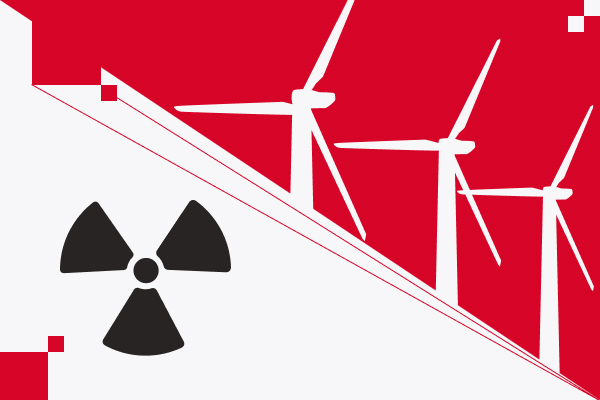Trading Signals 05/02 – 09/02
Prospects of Confrontation Between Green and Nuclear Energy: Analyzing the Future of Global Energy Dynamics

The global energy landscape is witnessing a seismic shift as countries grapple with the pressing need to transition from fossil fuels to low-carbon and renewable energy sources. This transition has given rise to an ongoing debate surrounding the role of green energy and nuclear energy.
Green Energy: The Accelerated Growth of Renewable Energy Sources
Countries are increasingly embracing renewable energy sources due to the growing concerns over climate change, air pollution, and energy security. The decline of nuclear power is expected to lead to a temporary increase in CO2 emissions; however, these emissions should be quickly reduced as renewable energy sources expand.
Renewable energy has experienced rapid growth over the past decade, with solar, wind, and hydropower leading the way. Technological advancements have driven down the costs of renewable energy, making it increasingly competitive with conventional energy sources. The International Energy Agency (IEA) predicts that renewable energy will account for 95% of the net increase in global power capacity by 2025.
Nuclear Energy: The Controversial Low-Carbon Alternative
Nuclear power has the potential to contribute to global decarbonization efforts, as it is a low-carbon energy source capable of providing reliable baseload power. Countries such as France, China, and Russia rely on nuclear energy for a significant portion of their electricity generation. However, nuclear energy has been mired in controversy due to concerns over safety, radioactive waste disposal, and nuclear proliferation.
The anti-nuclear movement has played a significant role in shaping public opinion and political decisions regarding nuclear energy. In Germany, for example, the government has decided to phase out nuclear power by 2022, citing safety concerns and the need to prioritize renewable energy. Meanwhile, countries like China and Russia continue to invest in nuclear energy, highlighting the geopolitical aspects of this debate.
The Confrontation: Weighing the Pros and Cons
Renewable energy sources offer several advantages over nuclear power, including lower costs, greater scalability, and reduced environmental risks. Additionally, renewable energy projects can typically be deployed more quickly than nuclear power plants, offering a more immediate response to climate change. Proponents of nuclear energy argue that it is a necessary component of the global energy mix, as it can provide reliable, low-carbon baseload power.
The Balancing Act: Integration of Green and Nuclear Energy
In order to achieve a low-carbon energy future, some analysts argue that both green and nuclear energy should be used in a complementary manner. This approach could leverage the strengths of each energy source while mitigating their respective drawbacks. For instance, nuclear power could provide baseload power, while renewables could address the intermittency issues associated with solar and wind energy.
Technological advancements in energy storage and grid management can help integrate green and nuclear energy sources more effectively. Innovations such as advanced batteries and smart grid systems could enable a more flexible and resilient energy infrastructure that accommodates both renewable and nuclear power.
Geopolitical Considerations: The Role of Global Powers
Global powers such as the United States, China, and Russia play a crucial role in shaping the future of the energy landscape. These countries can drive international cooperation and innovation in both green and nuclear energy sectors, fostering a more sustainable and secure global energy system.
Tensions between global powers can undermine international nonproliferation efforts and hinder progress towards a low-carbon future. It is crucial for countries to engage in constructive dialogue and collaboration to address the challenges posed by both green and nuclear energy.
Navigating the Path Towards a Sustainable Energy Future
As the world transitions towards a low-carbon energy future, the debate surrounding green and nuclear energy will continue to evolve. While there are valid arguments on both sides of the confrontation, it is essential to recognize the potential benefits and drawbacks of each energy source. Ultimately, a balanced and integrated approach that leverages the strengths of both green and nuclear energy may be the most effective way to achieve a sustainable and secure global energy system.
By understanding the economic, political, and environmental factors that drive this confrontation, we can work towards a more informed and nuanced approach to energy policy and decision-making. This will be critical in navigating the complex challenges and opportunities that lie ahead as we strive to build a cleaner, greener, and more resilient global energy system.
Oil: A Review of Early 2024
China’s Economy: Early 2024
Simple Strategy for Beginner Traders

